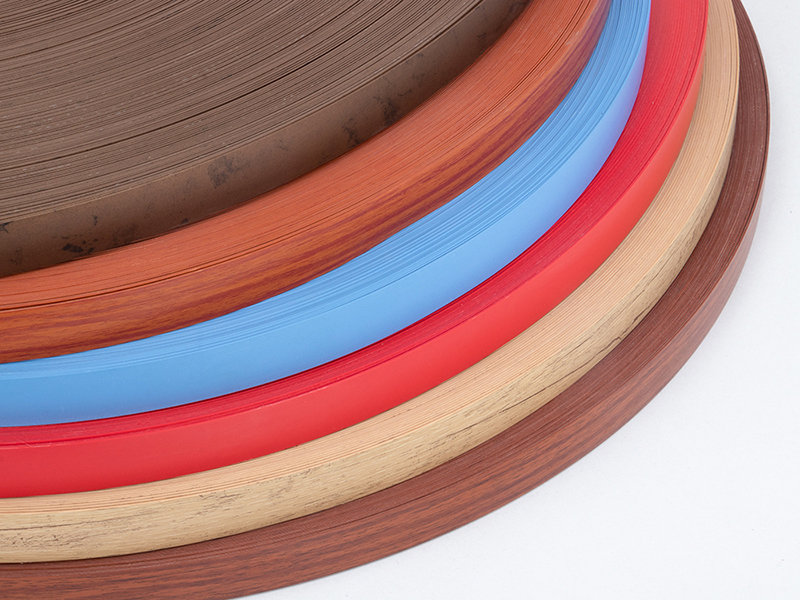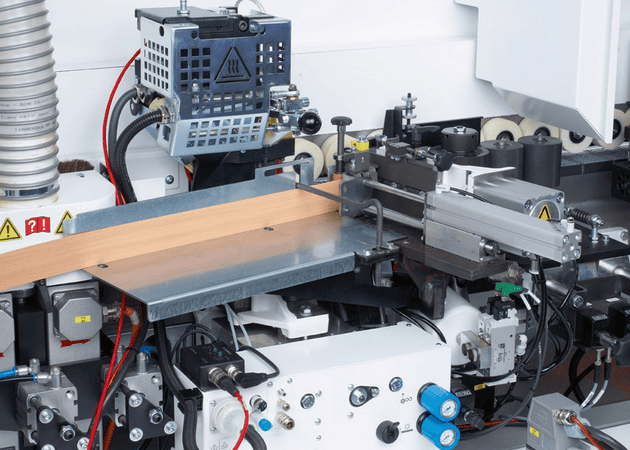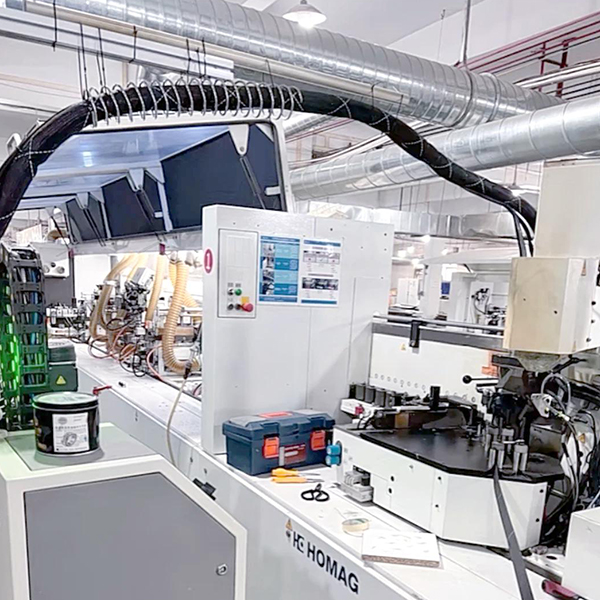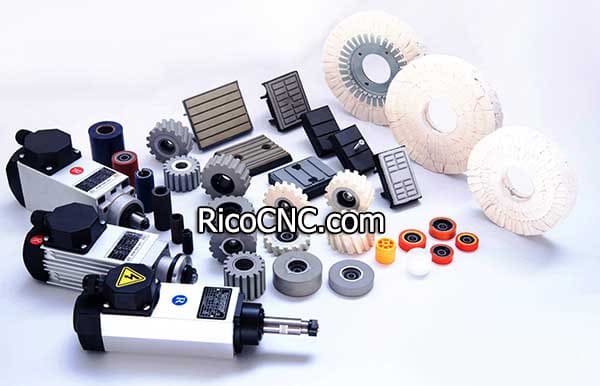The main purpose of edge banding is to protect the edge of the furniture and prevent moisture and air from entering the interior of the board, thereby extending the service life. Edge banding can also improve the overall aesthetics of the panel furniture, making it look more refined.

The following are common edge banding methods:
1. Hot melt adhesive edge banding
Hot melt adhesive edge banding is the most common edge banding method at present. Its main principle is to melt the hot melt adhesive by heating and adhering the edge banding strip to the edge of the board. Commonly used edge banding materials include PVC, ABS, acrylic, etc.
Process flow:
• Cleaning the panel edge: Make sure the edge is flat and clean.
• Heating the edge banding machine: Heat the hot melt adhesive to a certain temperature.
• Gluing: Apply the hot melt adhesive evenly on the edge banding tape.
• Pasting: Attach the edge banding strip to the edge of the board and press it tightly with a roller.
• Trimming: Use a trimming cutter to cut off the excess edge banding strip.
Advantages:
• Easy to operate and high efficiency.
• Good edge banding effect and the joints are not easy to crack.
• Suitable for boards of various shapes and materials.
Disadvantages:
• High requirements for equipment and technology.
• The trimming after edge banding needs to be done carefully, otherwise it is easy to leave defects.

2. Cold-pressed edge banding
Cold-pressed edge banding is a process of bonding the edge banding strip to the edge of the board using cold glue (such as white latex). It does not require heating and relies on mechanical pressure to tightly bond the edge banding strip to the board.
Process flow:
• Cleaning the edge: Make sure the edge is flat and clean.
• Gluing: Apply cold glue evenly on the contact surface between the edge banding and the board.
• Pasting: Attach the edge banding strip to the edge of the board.
• Pressing: Use a press or hand tool to press the edge banding tape to ensure a strong bond.
• Trimming: Trim the excess edge banding tape
Advantages:
• Simple equipment and low cost.
• Flexible operation, suitable for small batch production.
• No heating required, environmentally friendly and safe.
Disadvantages:
• The bonding strength is not as good as hot melt adhesive edge sealing.
• Time-consuming operation and low efficiency.
• Requires a longer curing period.

3. Laser edge banding
Laser edge banding is a high-tech edge banding process that uses a laser beam to fuse the edge banding strip to the edge of the sheet. The main principle is to heat the special material at the bottom of the edge banding strip through the laser so that it melts and tightly combines with the sheet.
Process flow:
• Clean the edge: Make sure the edge is flat and clean.
• Set laser parameters: Set the power and speed of the laser according to the edge banding and sheet material.
• Laser welding: Heat the edge banding with a laser beam to melt it and bond it to the edge of the sheet.
• Cooling: After the edge banding is welded to the sheet, it needs to be cooled and solidified.
Advantages:
• No glue is needed, and the edge banding effect is more environmentally friendly.
• Excellent edge sealing effect, no seams, and exquisite appearance.
• High efficiency, high degree of automation, suitable for mass production.
Disadvantages:
• Expensive equipment, large initial investment.
• High technical requirements, requiring professional operators.
• Mainly suitable for high-end furniture manufacturing.
4. Pre-coated glue edge banding
Pre-coated glue edge banding is to first pre-coat a layer of glue on the bottom of the edge banding strip, and then melt the glue through a heating device to finally achieve edge sealing. Commonly used pre-coated glues include EVA, PUR, etc.
Process flow:
• Cleaning the board edges: Make sure the edges are flat and clean.
• Heating the pre-coated glue: Heat the pre-coated glue through the edge banding machine to melt it.
• Pasting: Glue the pre-coated glue edge banding strip to the edge of the board and press it tightly with a pressure roller.
• Cooling: Cooling and solidification is required after edge banding.
Advantages:
• Easy to operate, suitable for all kinds of boards.
• High bonding strength and good edge sealing effect.
• Suitable for mass production.
Disadvantages:
• High requirements for the quality of pre-coated glue.
• Trimming after edge sealing needs to be done carefully.
• Large initial equipment investment.

RicoCNC can supply a range of edgebanding machine parts such as rubber pressure wheels, track chain pads, edge bander glue pot, cloth buffing wheels, shock absorber, trimming motor, pre-milling motor, polishing motor, PCD premilling cutter, air cylinder, solenoid valve, infeed roller, etc.
If you would like to learn more information, welcome to contact RicoCNC Team.
Tel:+86-51268235075
Fax :+86-51268235075
Mobile:+86-13390848665
E-mail: cncsale@ricocnc.com
Skype: ccsalce
Whatsapp: +86-13390848665


